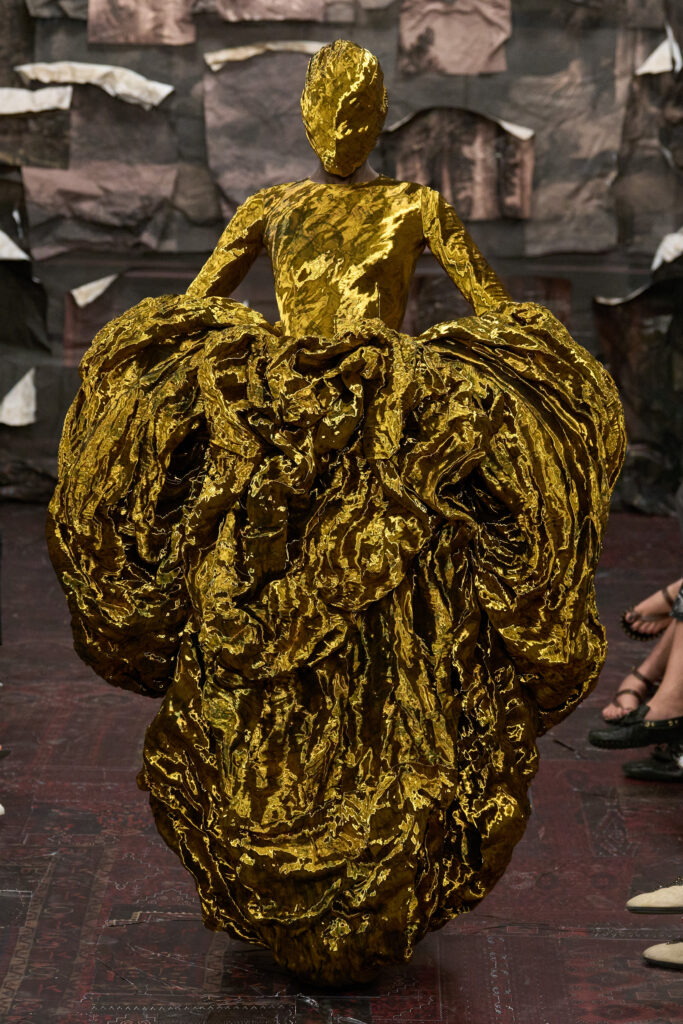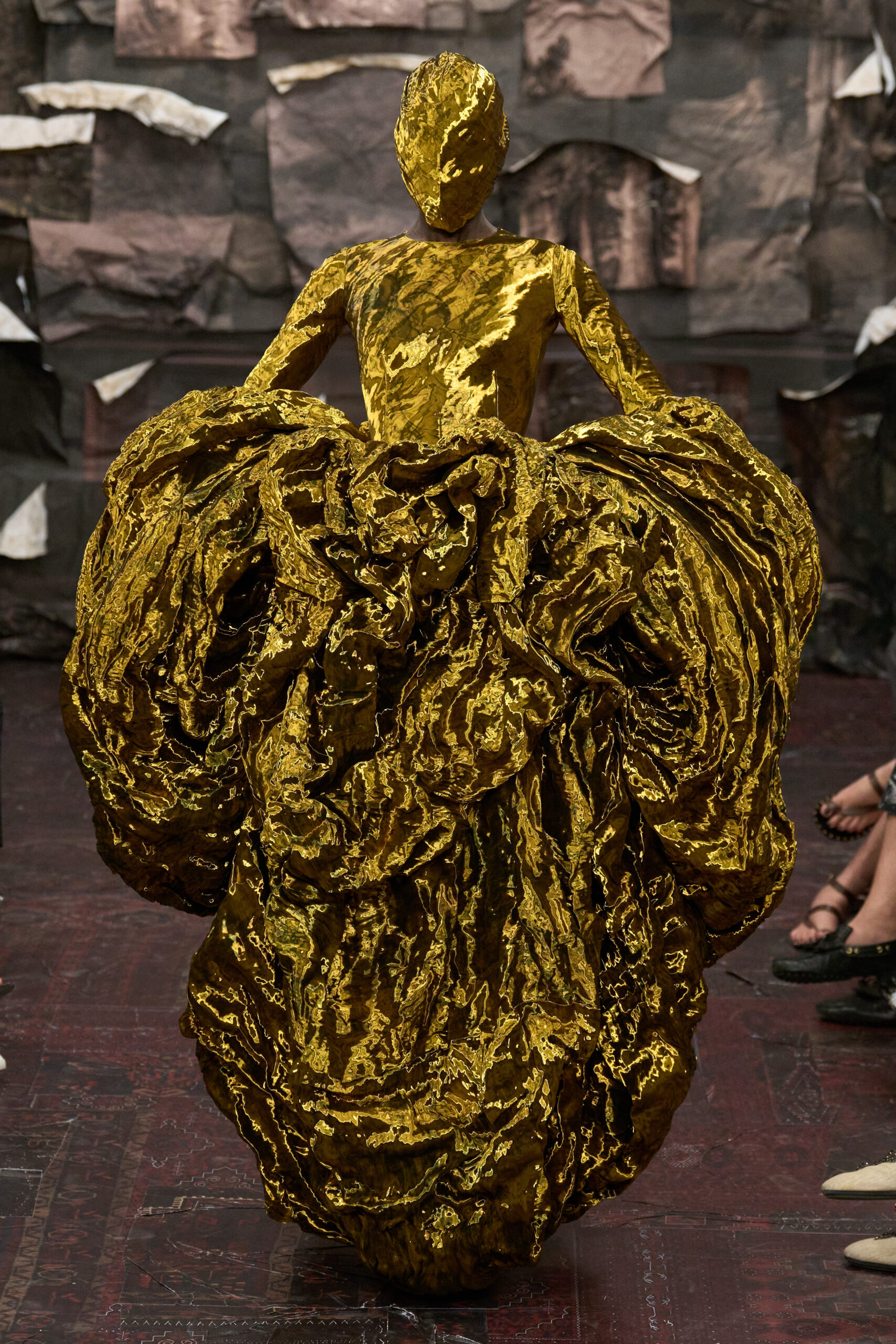After a triumphant return to the couture season last year, all eyes have been on Maison Margiela. Shortly following the departure of John Galliano as Creative Director, Glenn Martens’s Y/Project closed its doors, and Martens moved to Margiela. It seems to be the season of debuts, and one of the most anticipated was Martens’s first Artisanal collection for Margiela.
The show felt raw, rough around the edges. It had the same feeling of a designer debut in the early ’90s—McQueen, Galliano, and Margiela himself. The same sense of just scraping by, doing everything you can to produce a collection, was prevalent. Although Martens has an entire brand and years of a profitable house behind him, it still felt like a breakthrough—something not usually seen within debut shows.
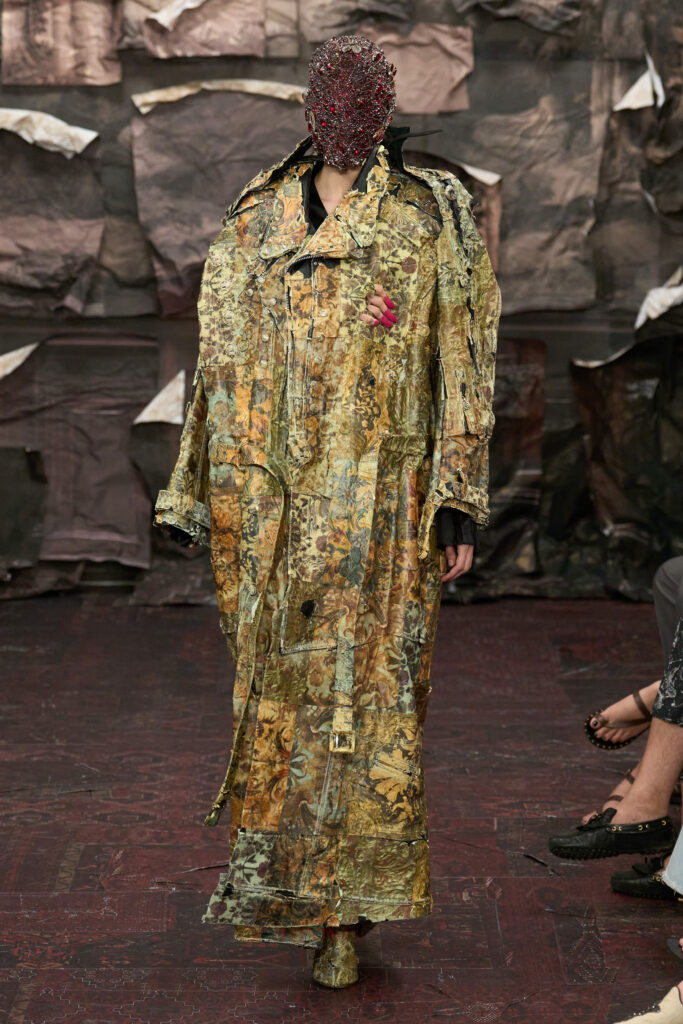
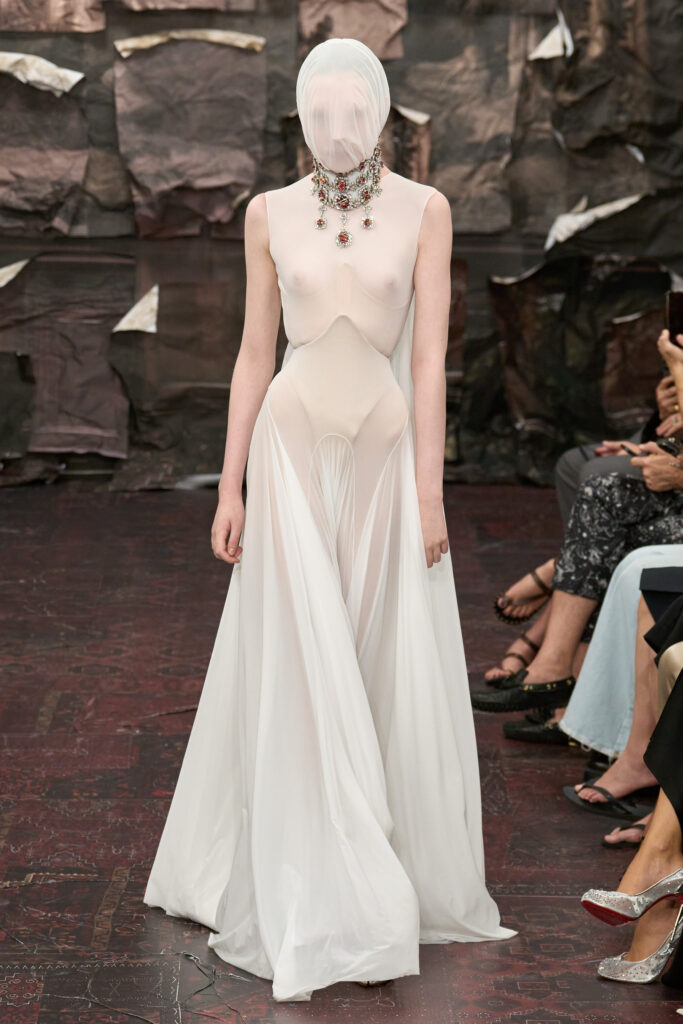
Images courtesy of Maison Margiela
From the first look, it was clear that Martens was fascinated by verticality: the slender, cathedral-like silhouettes that rose off the body as if trying to scrape the ceiling. Gothic towers translated into elongated drapes and corseted waists; the models moved like icons slipped from a stained glass window, but their sanctity was undone by the materials themselves.
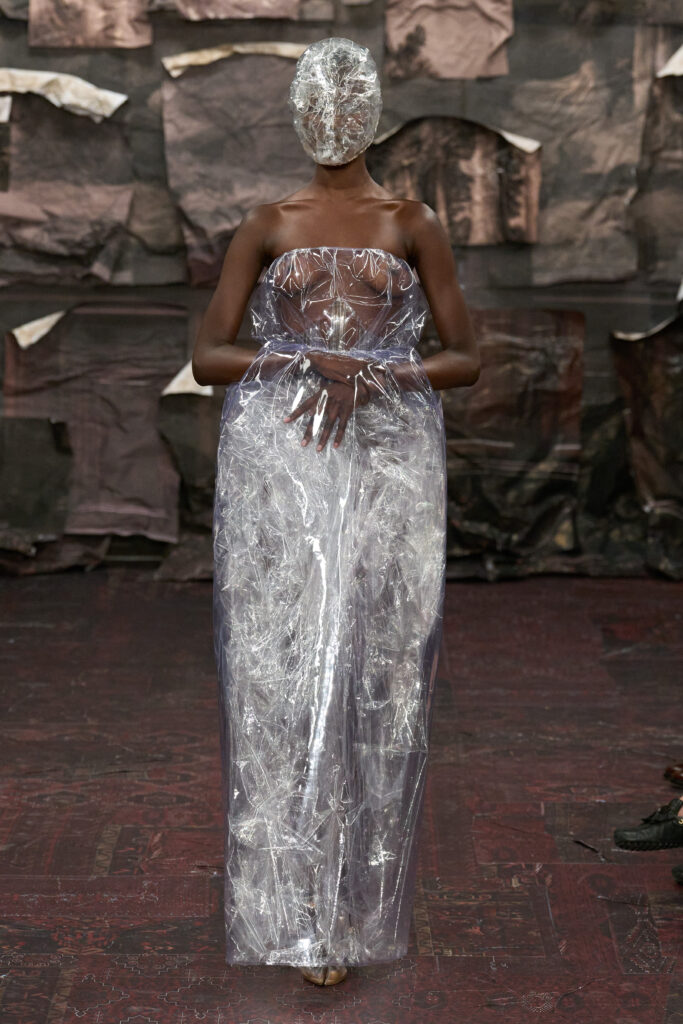
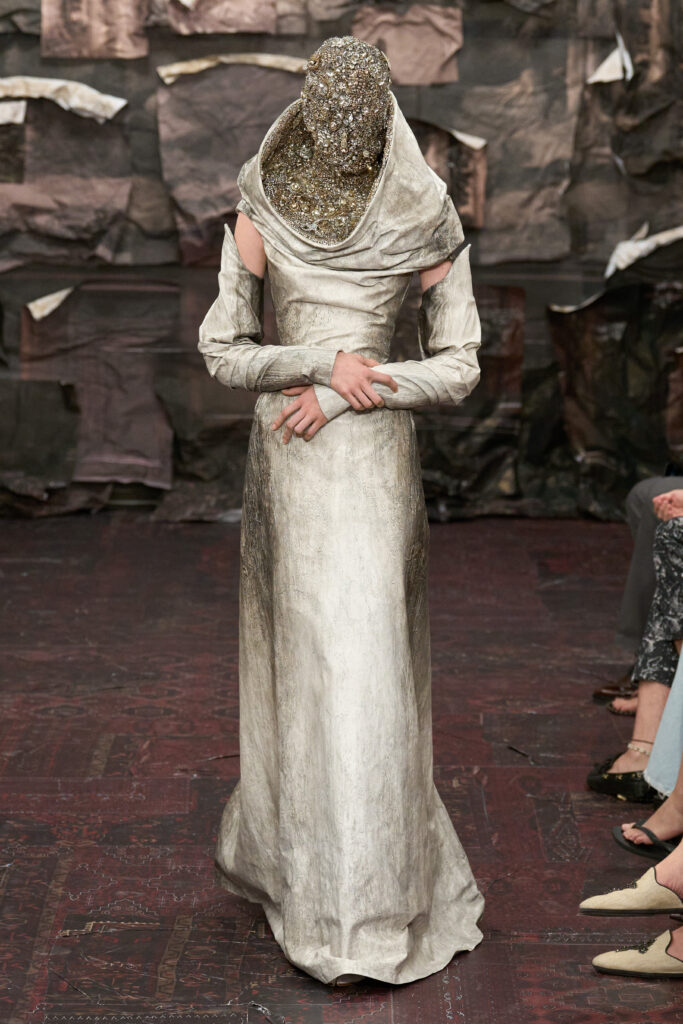
Images courtesy of Maison Margiela
Ordinary printing paper—cheap, ephemeral—became overlays, their surfaces inked with 16th-century Flemish wallpaper florals. Plastic sheets were printed with Dutch still lifes of game birds or decadent bouquets, then cut into collaged petals that fluttered against the body. In some garments, the paint itself was the garment: trompe l’oeil brushstrokes inspired by Gustave Moreau wrapped torsos in illusions of wet drapery, as though the wearer had stepped directly out of a Symbolist canvas. It was historical yet unfamiliar.
A main reason for this “newcomer drive” was the materials. Margiela has never been the epitome of luxury, and Martens knows this. He thrifted many of the fabrics from around Paris, making couture less about price tags and more about singular items.
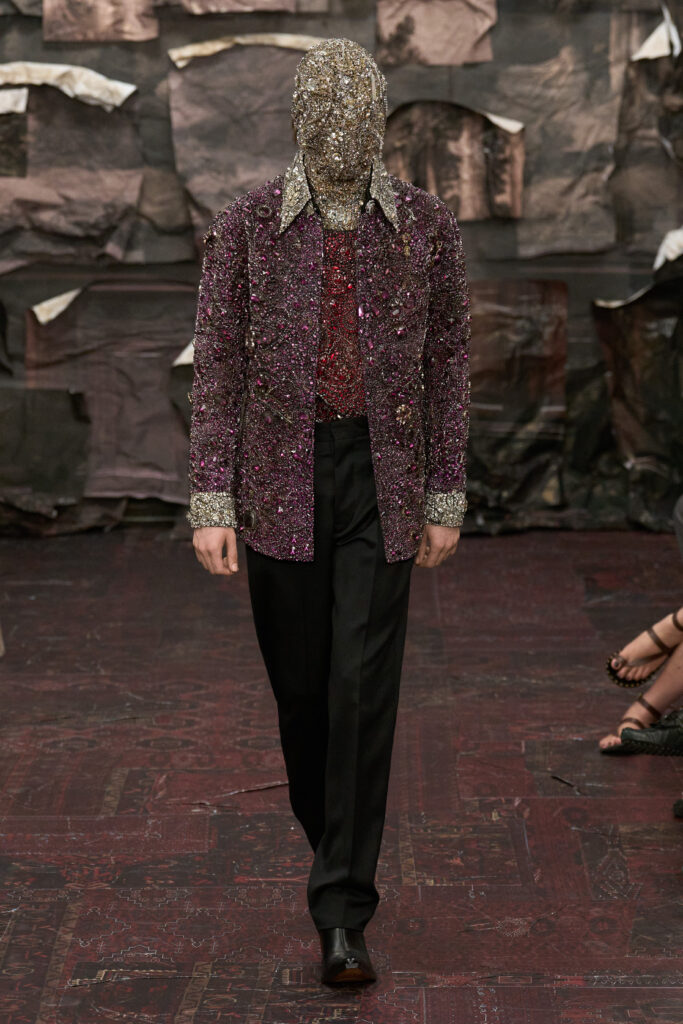
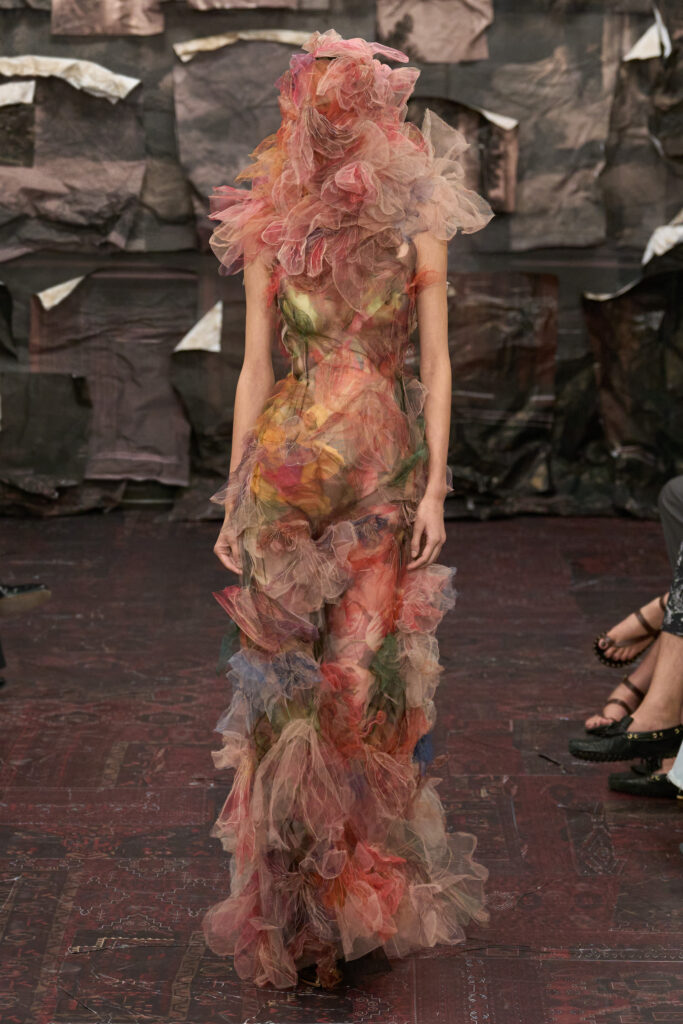
Images courtesy of Maison Margiela
The accessories pushed Margiela’s signature estrangement further. The Tabi was reimagined as a claw-toed leather boot, unsettlingly bestial, and a plastic wedge sandal that felt somewhere between a museum relic and a sci-fi prop.
The show contained the same sense of anonymity usually present at Margiela. Masks covered all of the models, focusing attention on craft instead of the who’s who of face cards. We were forced to focus on the experience before our eyes.
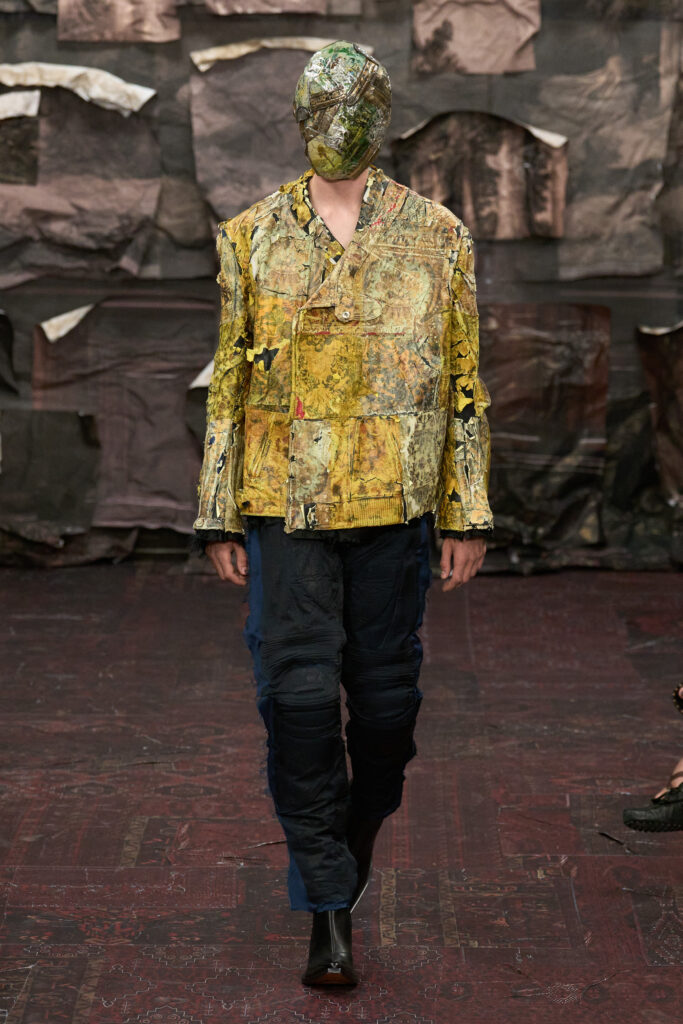
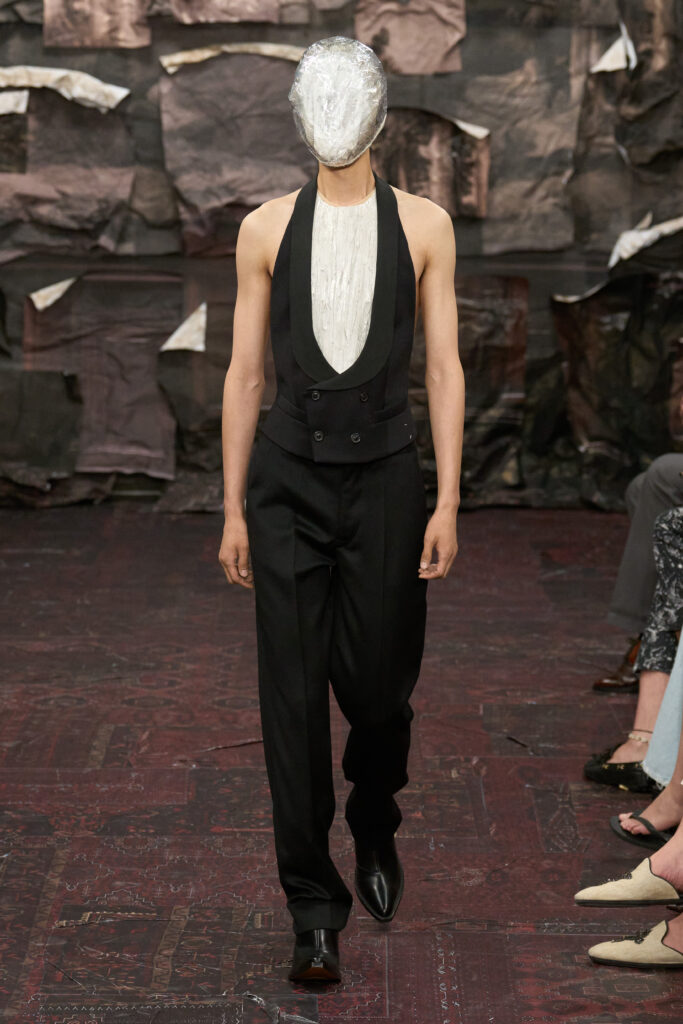
Images courtesy of Maison Margiela
Reminiscent of last year’s set, this one was deconstructed. The underbelly of the Parisian bar we saw previously was stripped away, with peeling wallpaper and mismatched flooring. This show was built on what has come before, peeling back the layers of Artisanal collections past to birth something new. As the models walked, a deconstructed Smashing Pumpkins soundtrack bled into the air, distorting any lingering sense of nostalgia or familiarity into something warped.
It takes a lot to follow Galliano and Margiela himself, but Martens proves that he has the stones to do so. Margiela has always broken binaries of what fashion can, could, or should be. This is Margiela at its most unguarded—a reminder that the past, whether it’s the original Tabi or a plastic tablecloth, only ever lives as long as you’re willing to reimagine it.
Discover More
